
20 Fun Facts About Winter Weather for Kids
Weather is an interesting topic for kids. From early childhood, they are exposed to simple information about the weather. They also feel the change in the weather in different seasons. Winter is one of the four seasons, and we witness a lot of changes happening during it.
Kids can notice the changes in winter weather. There are some interesting facts about winter for kids. For example, trees stop growing in winter. There are many questions as well in kids’ minds about winter. For example, What is the lowest temperature recorded in winter?
In this article, kids can find almost all the information they are curious to know about winter in a simple way that matches their age levels. For instance, what are some winter sports? How do certain animals live in winter?
Table of Contents
Facts About Winter: When Does Winter Begin?
Winter begins on the winter solstice, the point in the sky occupied by the sun on or about December 22nd when winter begins in the northern hemisphere. This is the day with the fewest hours of daylight. On the other hand, it is the 21st or 22nd of June in the Southern Hemisphere.
Facts About Winter: What is the Weather Like in Winter?
Winter is the coldest weather in the four seasons of the year. Daytime is shorter than nighttime during winter. In some countries, snowfalls occur in winter. Blizzards blow in winter too. Winter storms happen as well in winter when freezing rain, ice, and snow happen over a few hours.
Snowflakes can be seen in winter. The size of snowflakes varies from smaller than a penny to a giant crystal. Sleet is one of the weather features in winter. Sleet is frozen rain and it freezes when the air is cold.
Changes in weather happen according to the distance between the region and the equator. Regions at the equator have warm temperatures and stable weather conditions.
On the other hand, the temperature in the South and North poles is always cold because they are the farthest points from the equator. The North and South poles are always dark even in the daytime in winter.
Facts About Winter: Some Interesting Facts about Winter
- Winter storms receive power when two air masses of different temperatures and moisture levels crash.
- Winter storms result in many feet of snow.
- A blizzard is an extended snowstorm with very strong winds and intense snowfall.
- The Sun seems bigger in winter than in summer.
- Trees don’t grow in winter and they lose their leaves.
- Nights are definitely longer in winter than in summer.
- Some animals fully hibernate in winter, others just became inactive.
- Some birds hibernate in winter, others migrate to warmer regions
- During winter the North Pole reaches -40 degrees Fahrenheit.
- Snowflakes have 6 sides regardless of the designs.
- Snow is colourless, it reflects the light that falls on it.
- Aomori, in Japan, received the biggest number of snowfalls in the world.
- Canada hosts an International Hair Freezing competition every February.
- Dry snow, moist snow, wet snow, very wet snow, and slush or snow are the 5 types of snow.
- The Mississippi River entirely froze in1899.
Facts About Winter: Animal Hibernating in Winter
Some animals hibernate during winter due to the weather conditions. This happens mainly when there is not enough food supply and the temperature becomes colder. So, animals prefer to stay inactive or sleep for long periods until it gets warmer and they can wander about.
Let’s have a look at some examples of these animals!
Chipmunks
Chipmunks are tiny creatures belonging to the squirrel family. They eat nuts, insects and berries. They live in different habitats and are good tree climbers. They can live in mountains, deserts, and forests. There are 25 species of chipmunks.
In winter, chipmunks hibernate in their dens. The dens are small holes, 3 feet under the ground. They can collect food fast and store it in order not to go out of their dens in the cold weather. It is hard for them to arouse from a deep sleep. Their body temperature drops in winter as well.
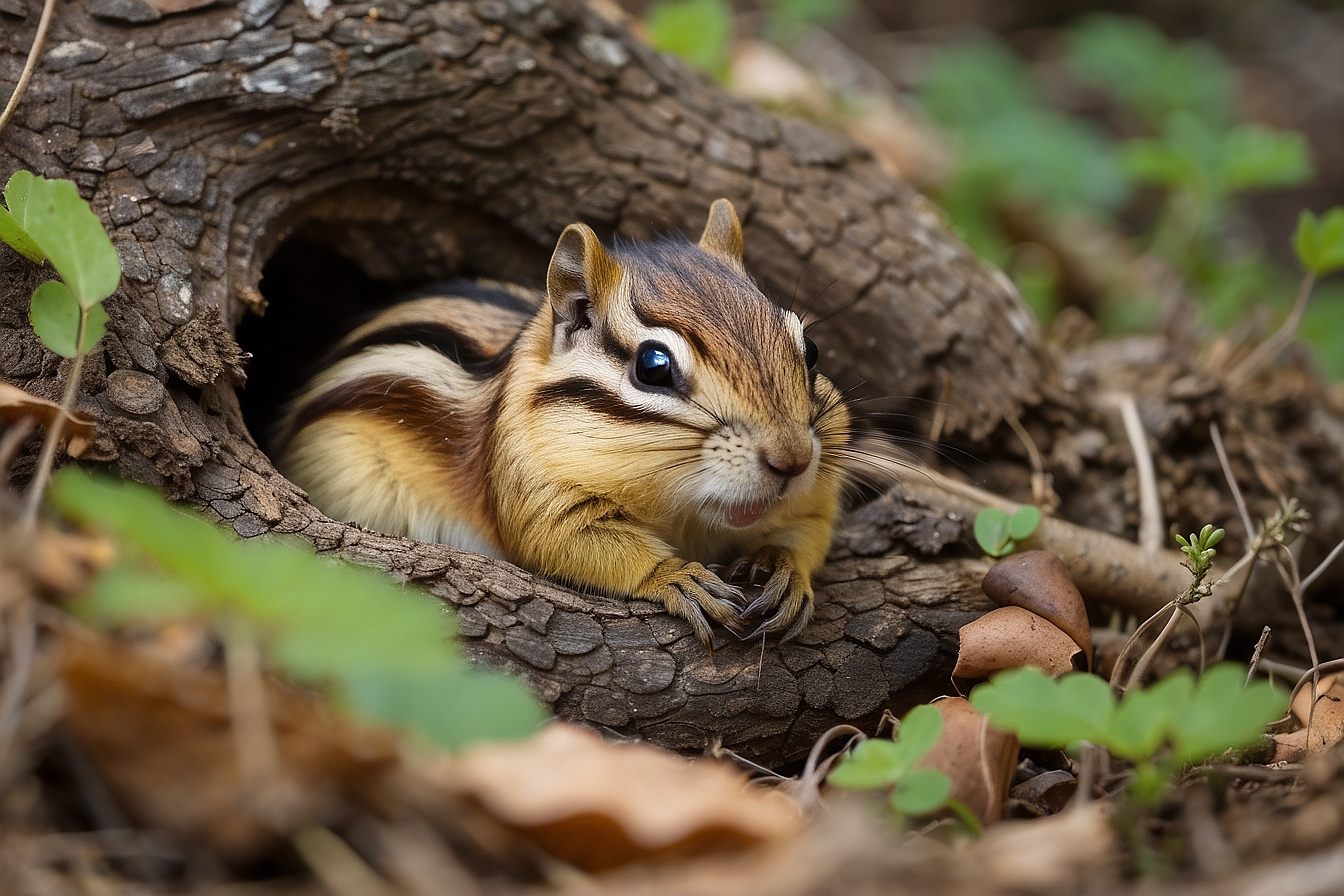
Bears
In winter, bears hibernate in their dens. They dig their dens under the bushes of trees, in caves, on hillsides or even on hollow trees. They hibernate when there is not enough food. They change their dens every winter, meaning that they don’t hibernate in the same place every winter.
Bears sleep heavily during winter. They don’t get up again before spring. When they are up again, they feed on the dead animals that couldn’t survive in winter.
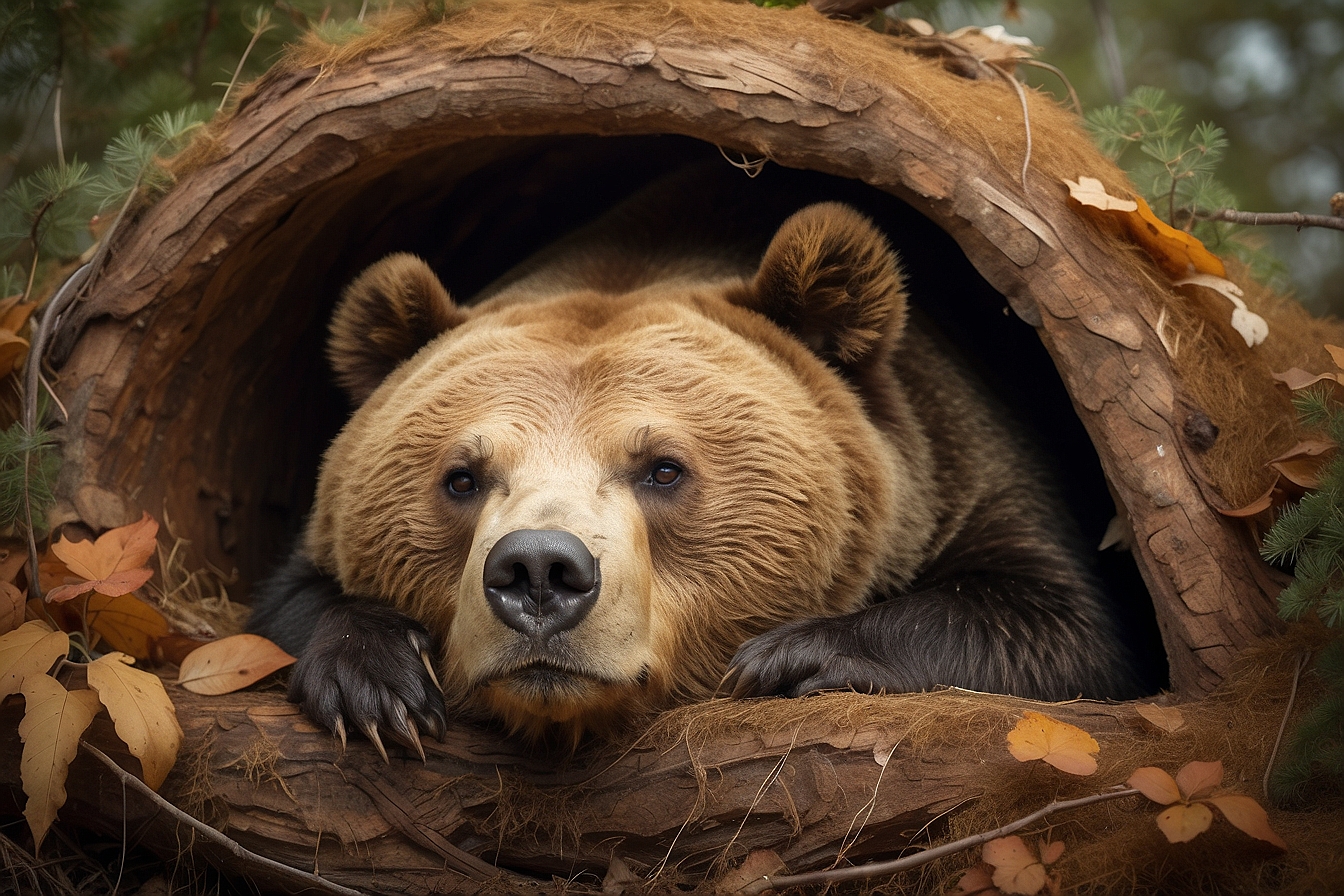
Bats
Bats become weird when they fly low during daylight because they don’t see well during the day. They have small eyes and they see better when they fly at night. They look like black rats with wings. The wings resemble rubber.
Some bats hibernate in winter when there is not enough food. They can hibernate in any warm place, like hollow trees, barns or caves. Their temperature can drop down to near-freezing temperatures.
They drop their temperature to lower the amount of energy they spend. So, they live on the fat stored in their bodies. They don’t come out until mid-day.
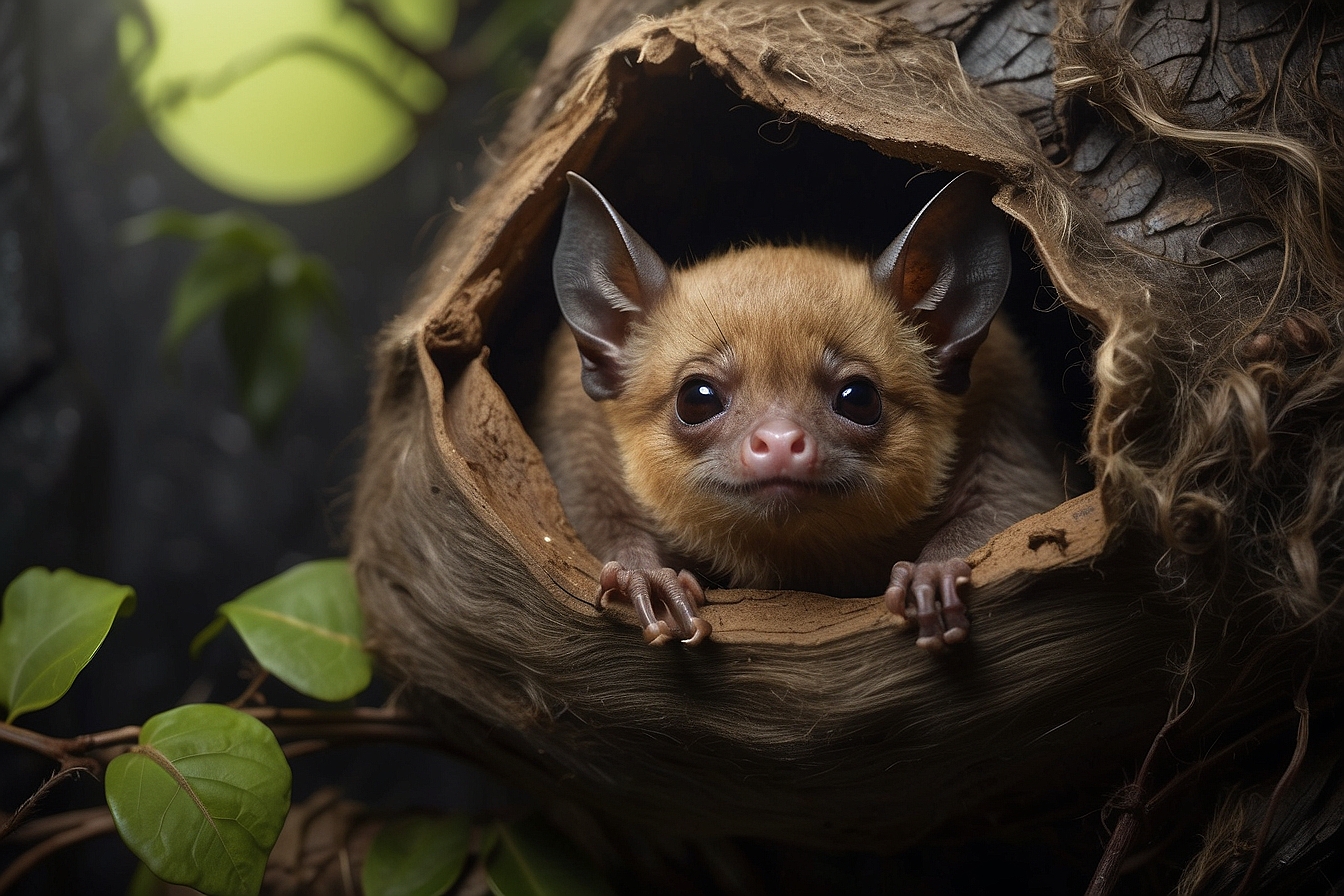
Box Turtles
Box turtles can be found in North America. They mainly live in Mesic woodlands. They warm their bodies from the air, water, or ground surrounding them. They need to stay warm so they can go and get their food.
They have a top domed-shaped shell and a bottom flat shell. They have no teeth. They are of different sizes. They feed on worms, snails and other insects, vegetables, and fungi.
In winter, Box turtles hibernate in their unique way. They crawl inside their shell. They spend almost 3 to 4 months inside their shell. They stop eating 14 days before they hibernate. They come out only to drink water, then they go back into their shells.
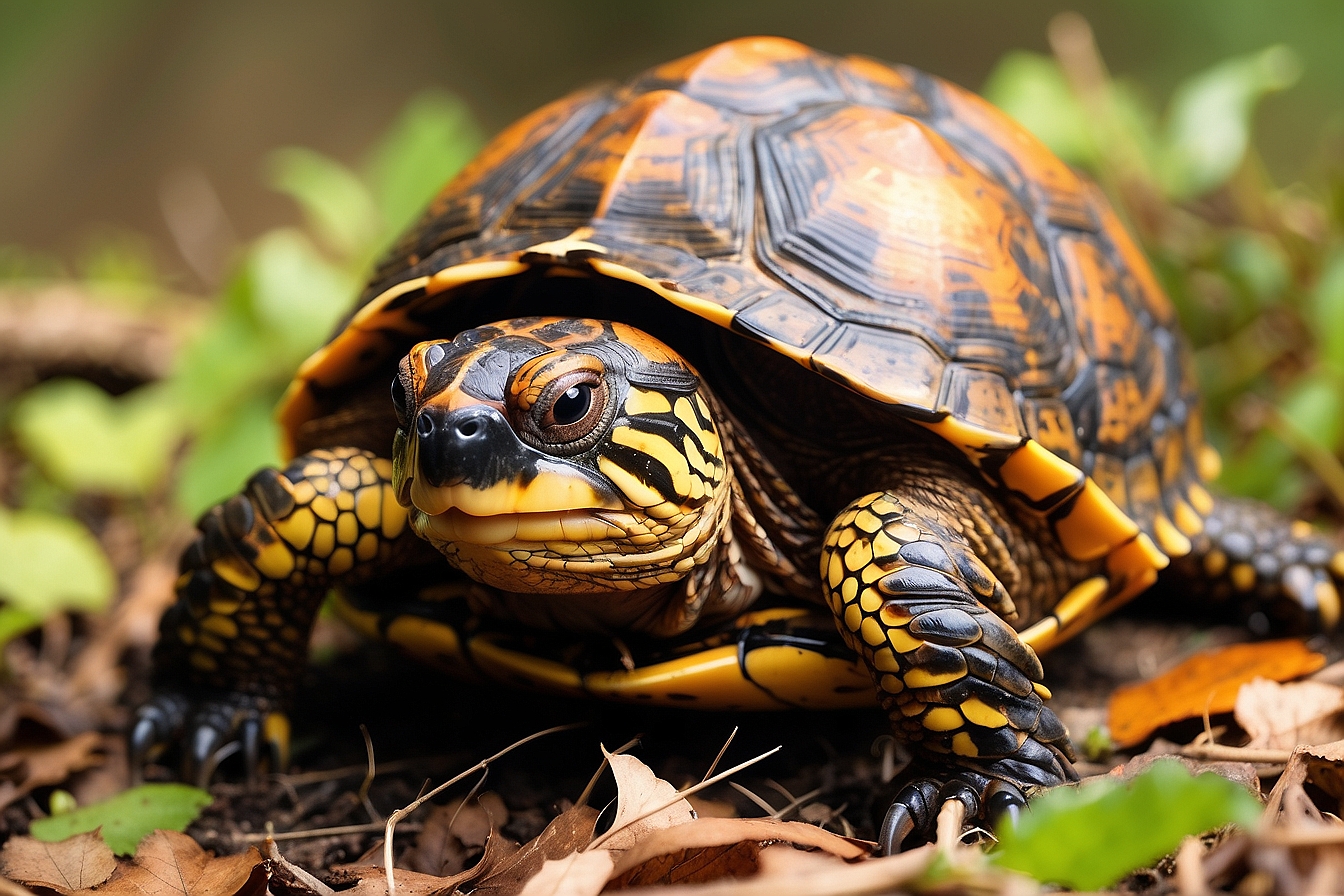
Bumblebees
Bumblebees live in large groups. They are similar to honey bees, but they are somehow larger in size and fuzzy with short wings. Bumblebees travel in groups of 50 to 500 bumblebees at one time. Up to 400 bumblebees live in the same nest.
Before winter, all bumblebees die. It is only the queen bumblebee that hibernates until the spring. The queen doesn’t eat during hibernation because it has enough fat to go to sleep and stay healthy.
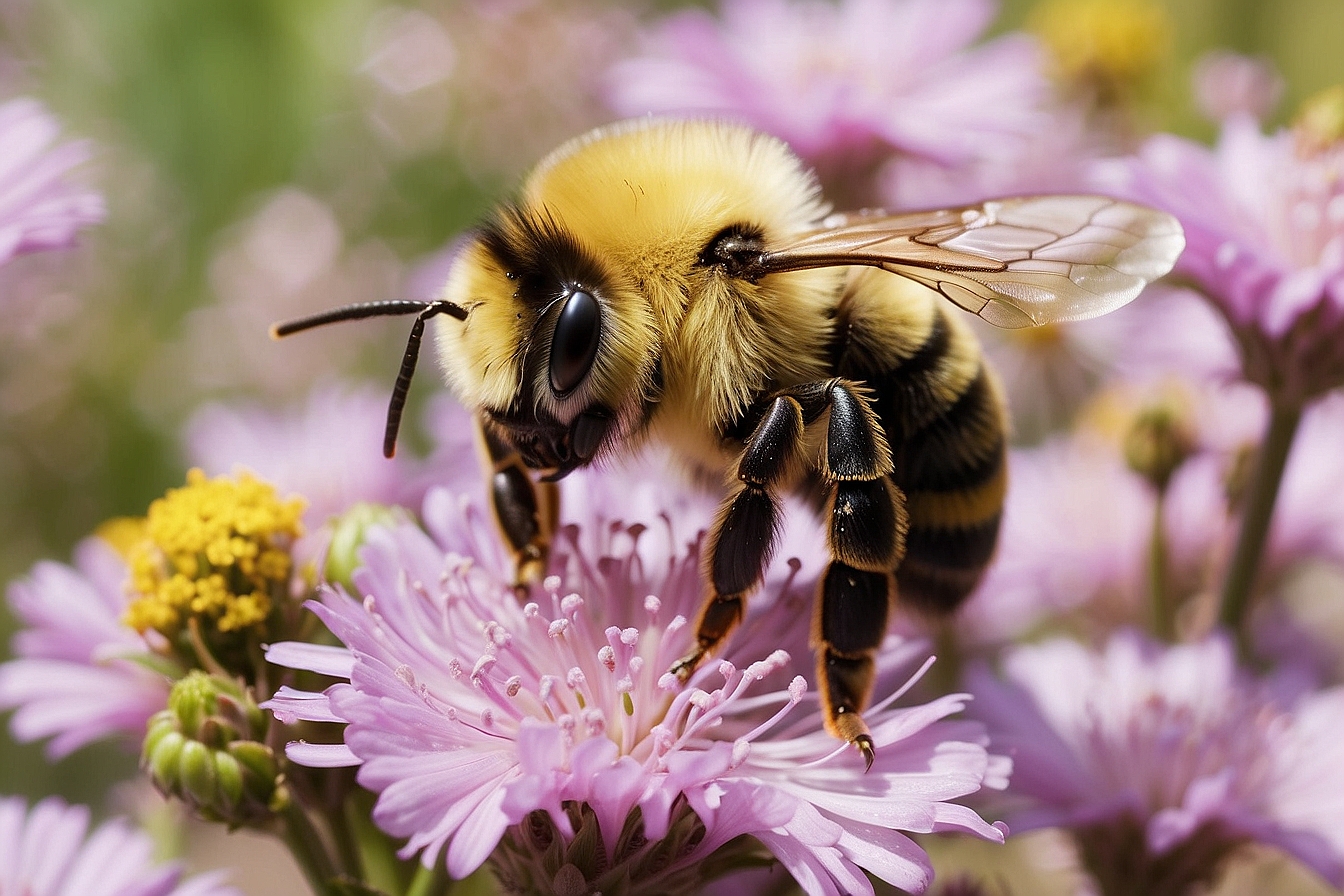
Garter Snake
Garter snakes are one of the less dangerous types of snakes. They are of different colours and some have yellowish or greenish stripes down the front. They are small in size.
In winter, Garter snakes use woodlands, grassy areas, and meadows as homes to hibernate. More than 8000 snakes can be found in the same den. They usually hibernate from late October to March or early April.
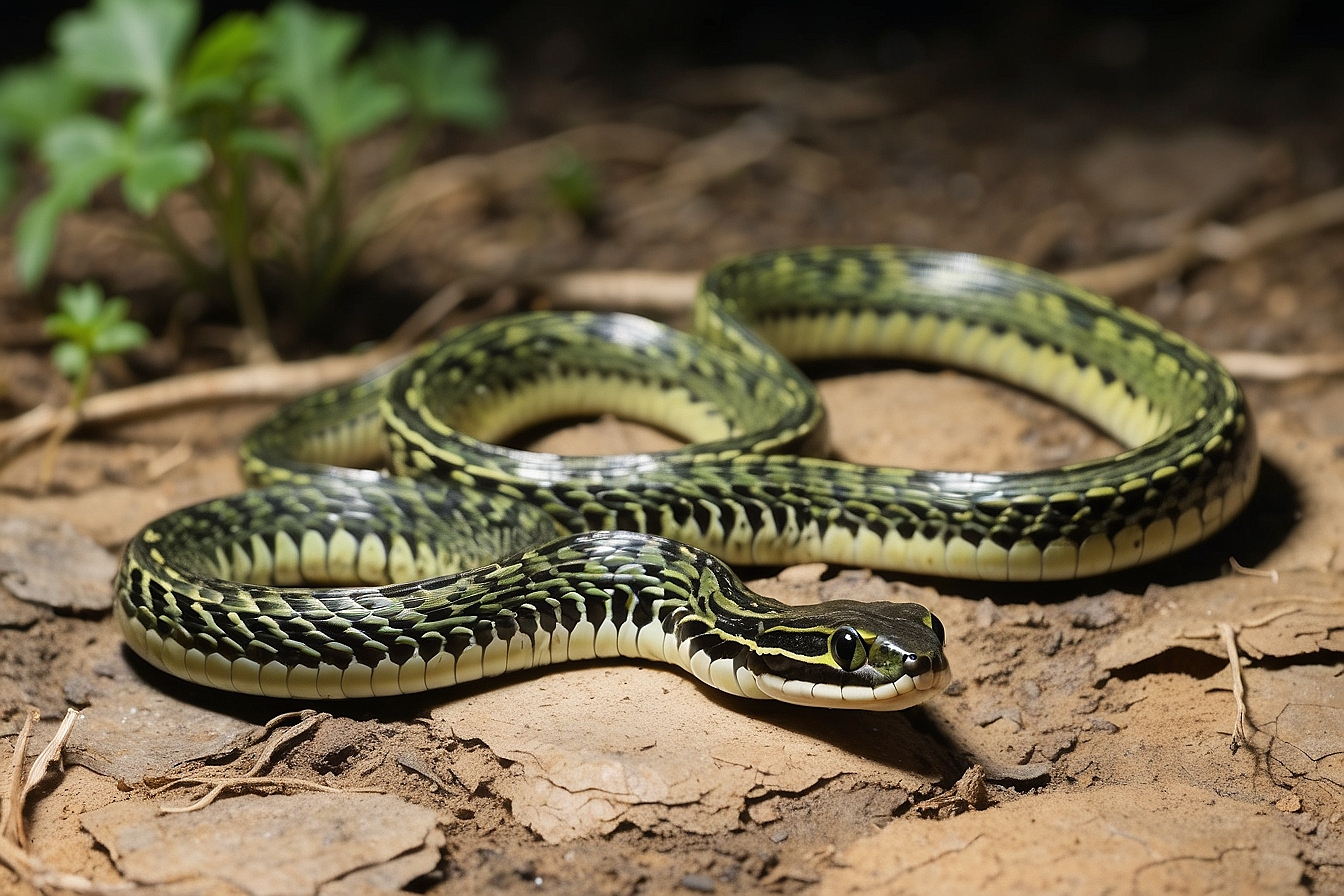
Hedgehog
Hedgehogs are nocturnal creatures because they sleep during the day and get up during the night. They feed on worms, insects, snails, frogs and snakes. They are called hedgehogs because they build their nests in hedges and bushes and they make a snorting sound.
Some kinds of hedgehogs hibernate in winter because there is not enough food and the weather gets cold. Their body temperature drops down to cope with the temperature of the surrounding environment.
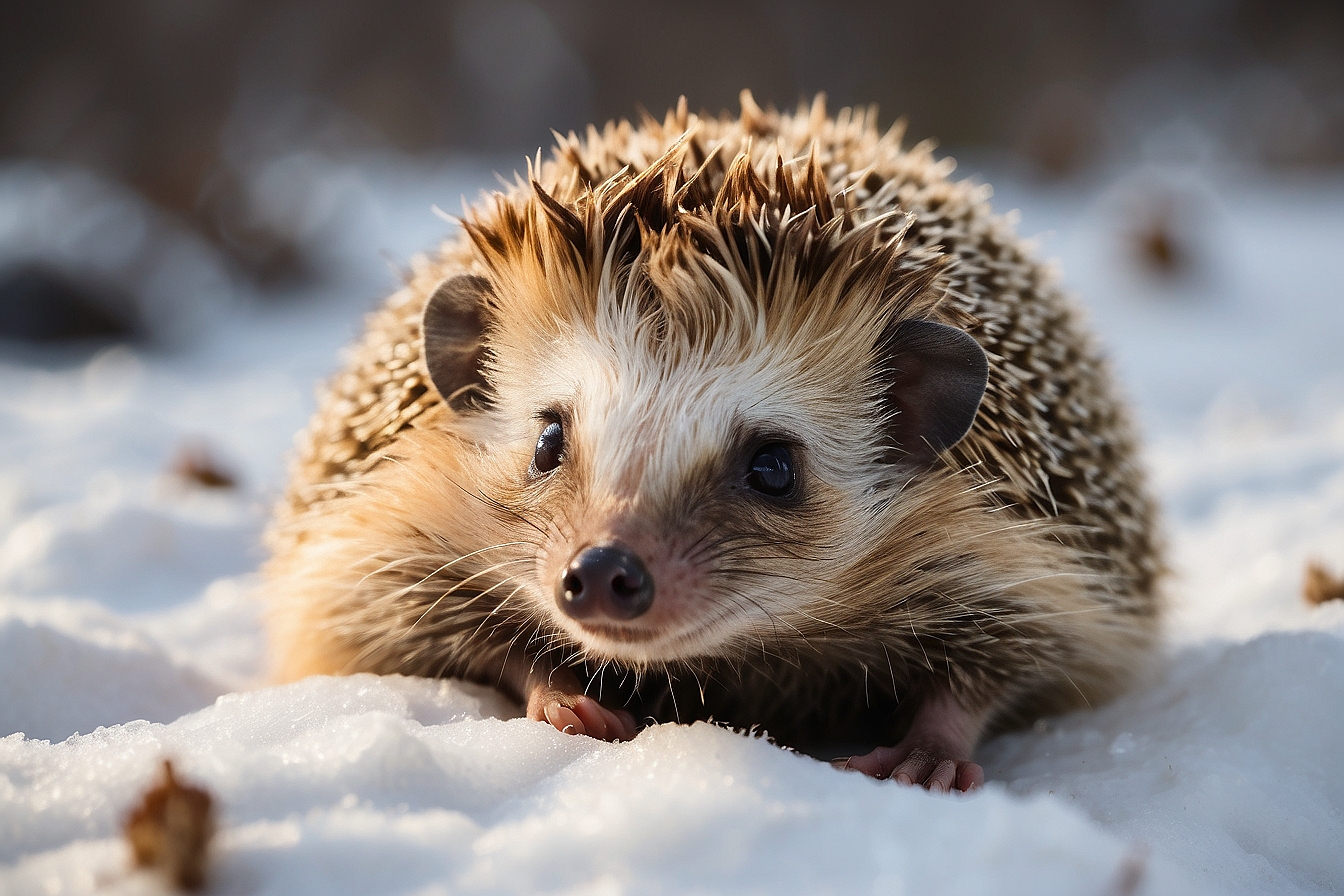
Land Snail
Snails vary in colour, shape, and size. They have a soft slimy body that is protected with a hard shell. Snails have heads, necks, visceral humps, tails, and feet. When snails feel threatened they hide inside the shell.
Snails hibernate in winter because food becomes scarce. They dig their dens under rocks, in leaves, or corners of buildings. Sometimes they hibernate in groups. They can hibernate from 4 to 5 months.
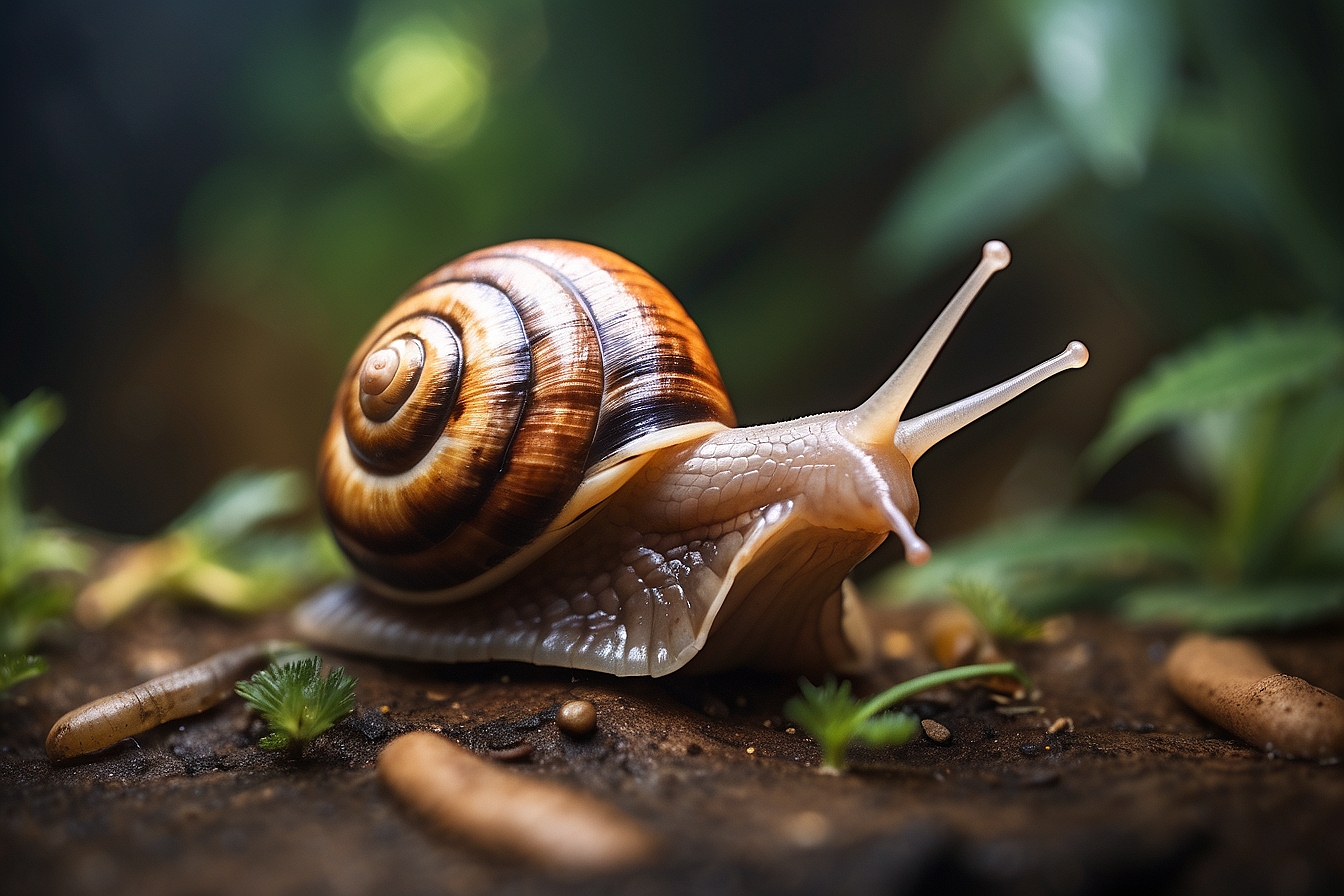
Fat-Tailed Dwarf Lemurs
Fat-Tailed Dwarf Lemurs live in the dry forest areas of western and southern Madagascar. They have tiny noses, big eyes, and human-like hands. They are called fat-tailed because they store the food they eat in their tails.
Fat-Tailed Dwarf Lemurs hibernate in winter for almost 7 months. They build their nests in tree holes. During hibernation, their body temperature matches the temperature of the surrounding environment. Their heartbeat also drops.

Wood Frogs
Wood frogs live in the forests. They can be found in Alaska and above the Arctic Circle. They feed on whatever is available in the forests. They have a tan, rust, or brown colour body with a dark eye mask.
Wood frogs hibernate during the winter strangely because they can freeze but not die. They also bury themselves anywhere under the ground where they live. They stop breathing completely and their heartbeat also stops.
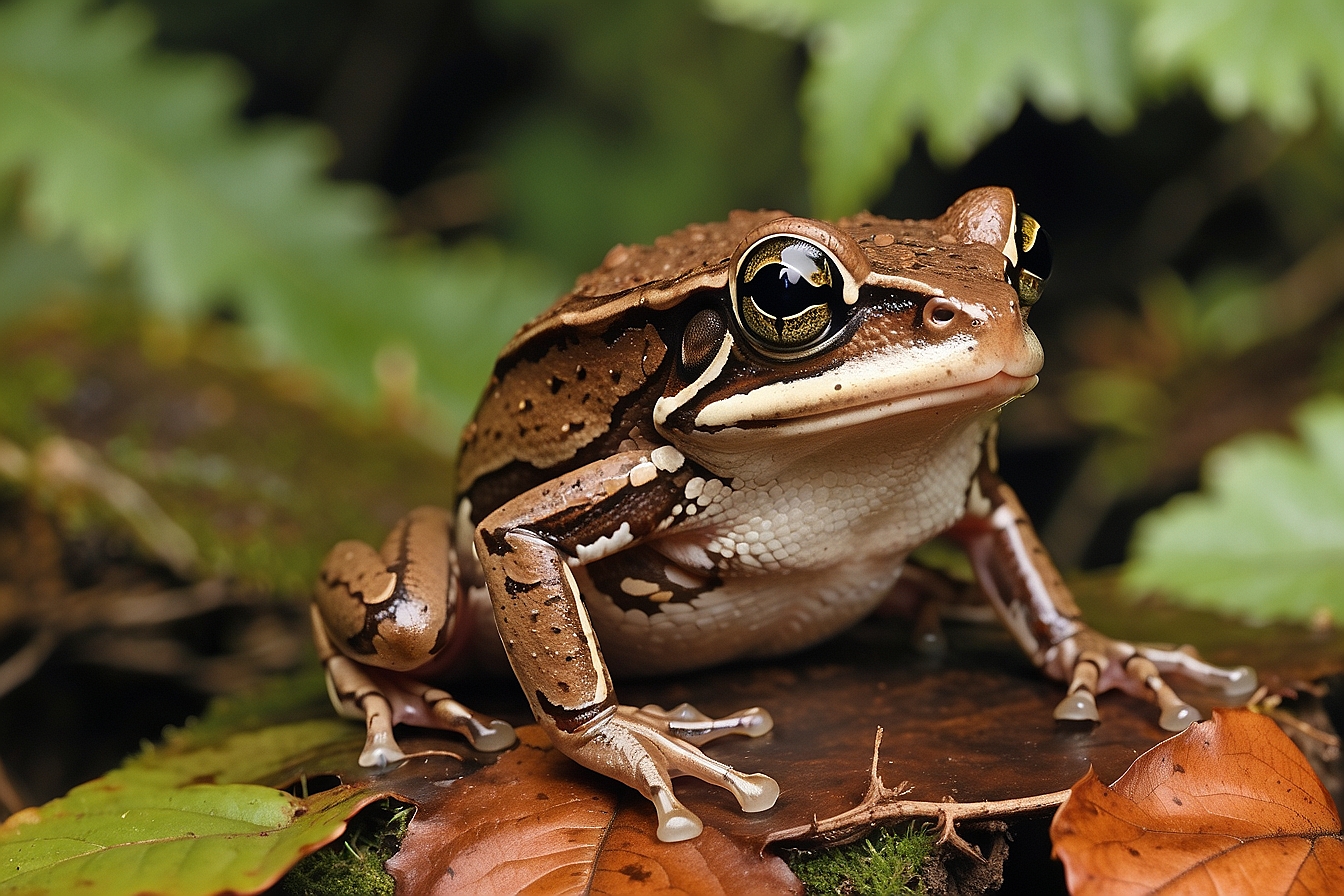
Common Poorwill
Common Poorwills are somehow similar to the owl in the appearance of its face. They can use camouflage to protect themselves because their colours are mixed with black, grey, and brown. They can be found from British Columbia and southeastern Alberta, through the western United States to northern Mexico.
Common Poorwills are the only kind of birds that hibernate in winter. They hide in piles of rocks at the foothills. They hibernate for weeks that can be extended to months. Their breathing, body temperature and heart rate drop down during hibernating.
Skunks
Skunks are white and black fluffy-tailed creatures that spray a horrible smell when they are afraid. They like to feed on plants and animal matter. Their habitats are usually hollow trees and logs.
Skunks don’t fully hibernate in winter. However, they become less active. They prefer to dig holes in a warm, dark home including under a deck, porch or shed, in a hollow log, or tree stump. They sometimes stay in groups to keep each other warm.
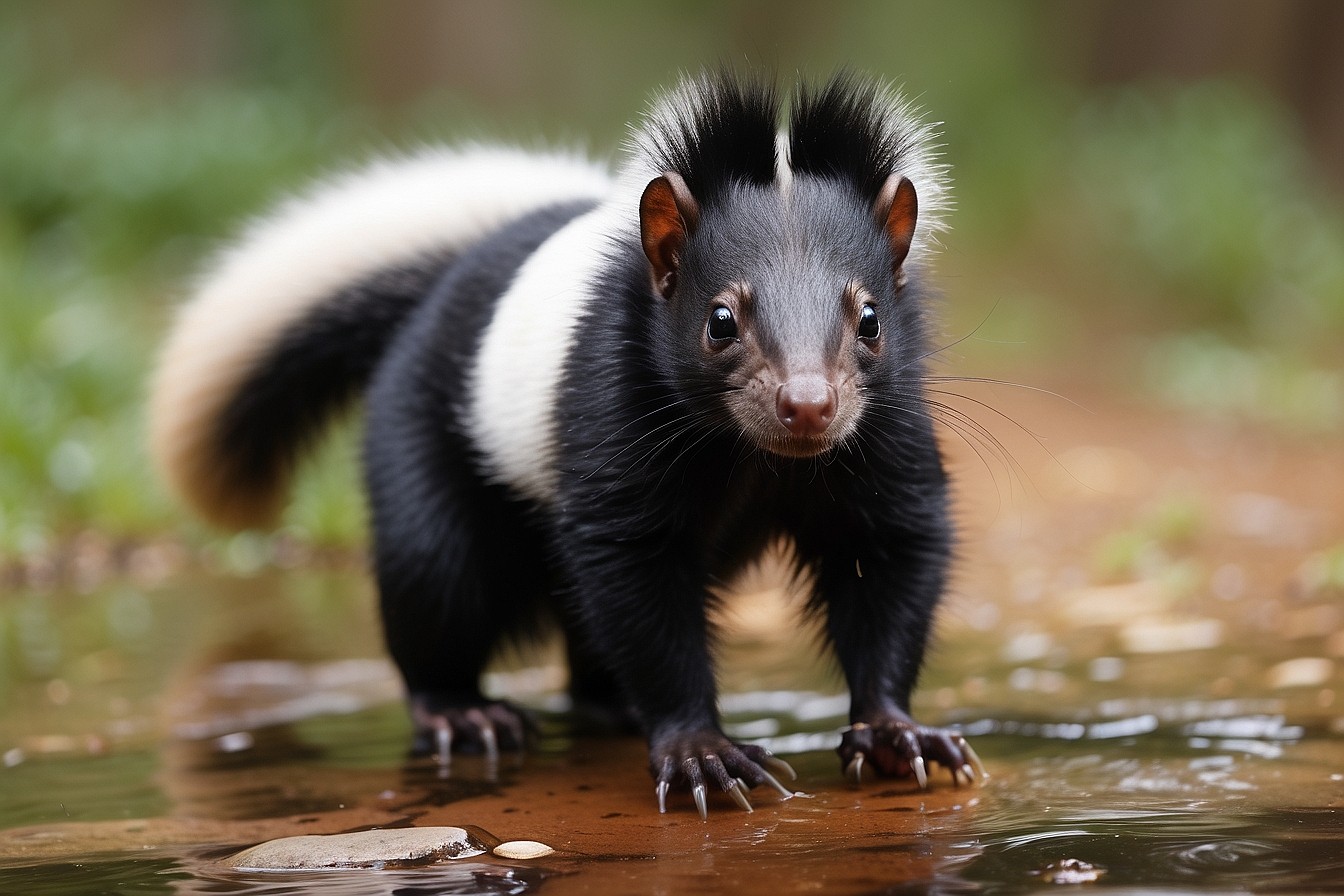
Deer Mice
Deer mice are small in size. They have big beady black eyes and little pointed noses. They feed on seeds, small fruits and berries, beetles, caterpillars, grasshoppers, leafhoppers, and underground fungus. They live in hollow tree logs or piles of garbage.
Deer mice don’t fully hibernate. They seek warm places to hide and find heat, food, and water. They become a bit inactive in winter. They usually store food in their nests in order not to come out in the cold weather. They tend to hibernate between October and February.
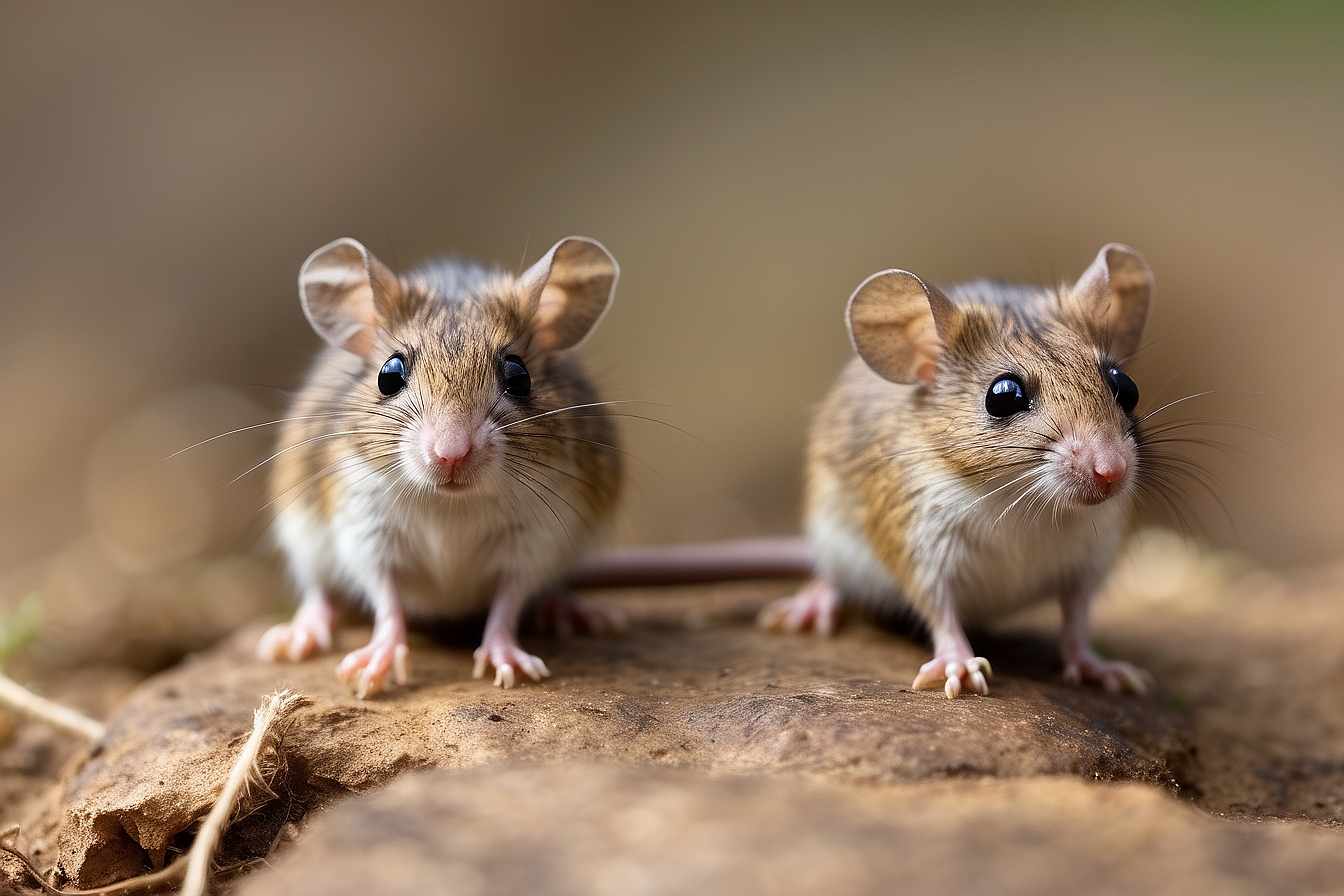
Prairie Dogs
Prairie dogs are not real dogs. They are rather small rodents. They live in homes and villages underground. However, they leave a space for light to come in so they can watch the prey. They feed on flowering plants, seeds, grass, roots, and insects.
Prairie dogs don’t fully hibernate. They usually come out searching for food. They tend to become inactive during the night especially when the weather is cold. The colder it gets, the deeper they hibernate.
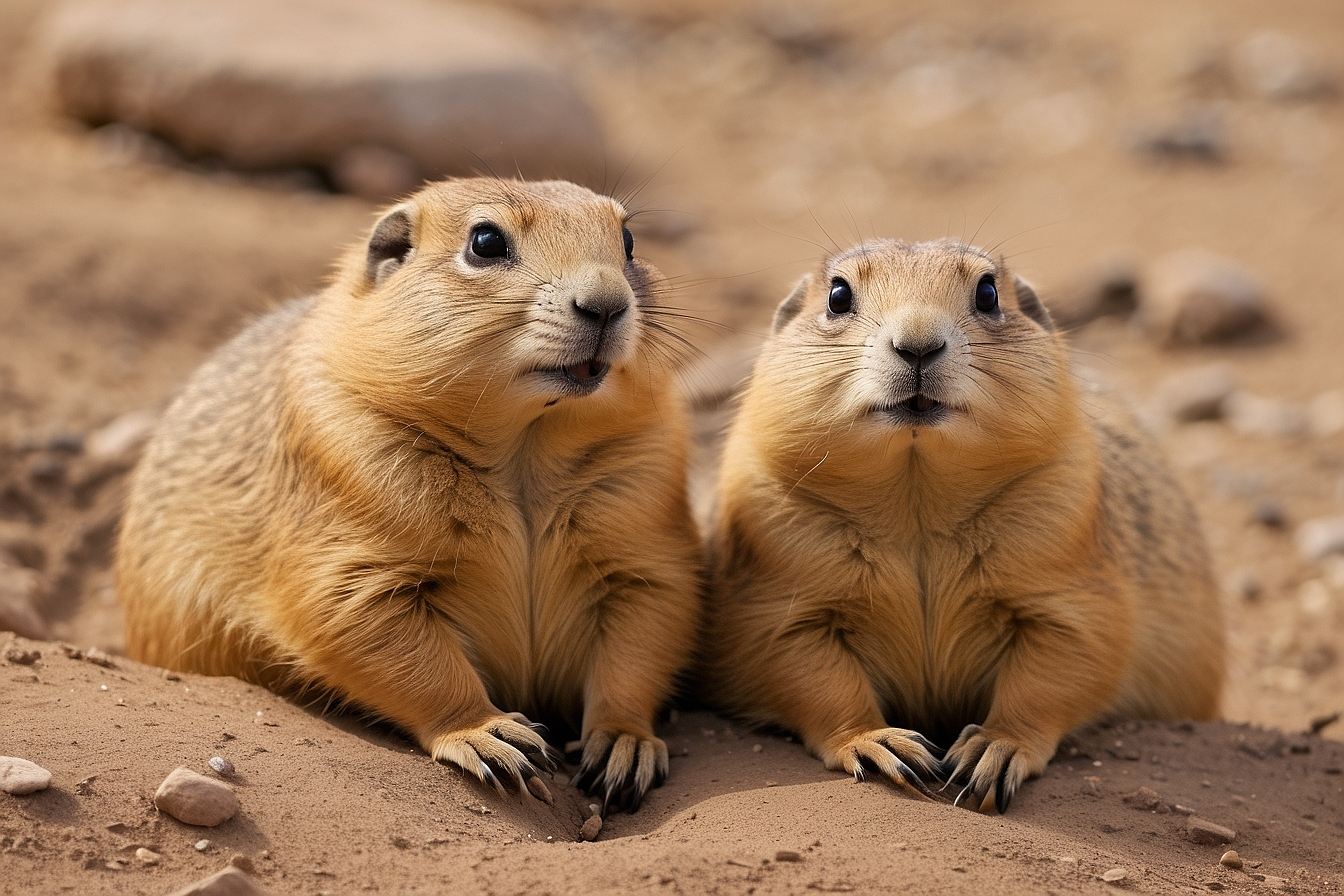
Ground Squirrel
Ground Squirrels are tiny rodents. They are brown with tints of grey and off-white spots on their back. They are similar to squirrels; they have long bushy tails and sharp claws. They make use of their sharp claws to dig and climb. They use whistling as a way of communication with each other.
Ground squirrels hibernate in winter. They are used to hibernating in their underground homes during the winter months. They don’t fully hibernate. Instead, they become less active. Their body temperatures and heart rate drop while hibernating.
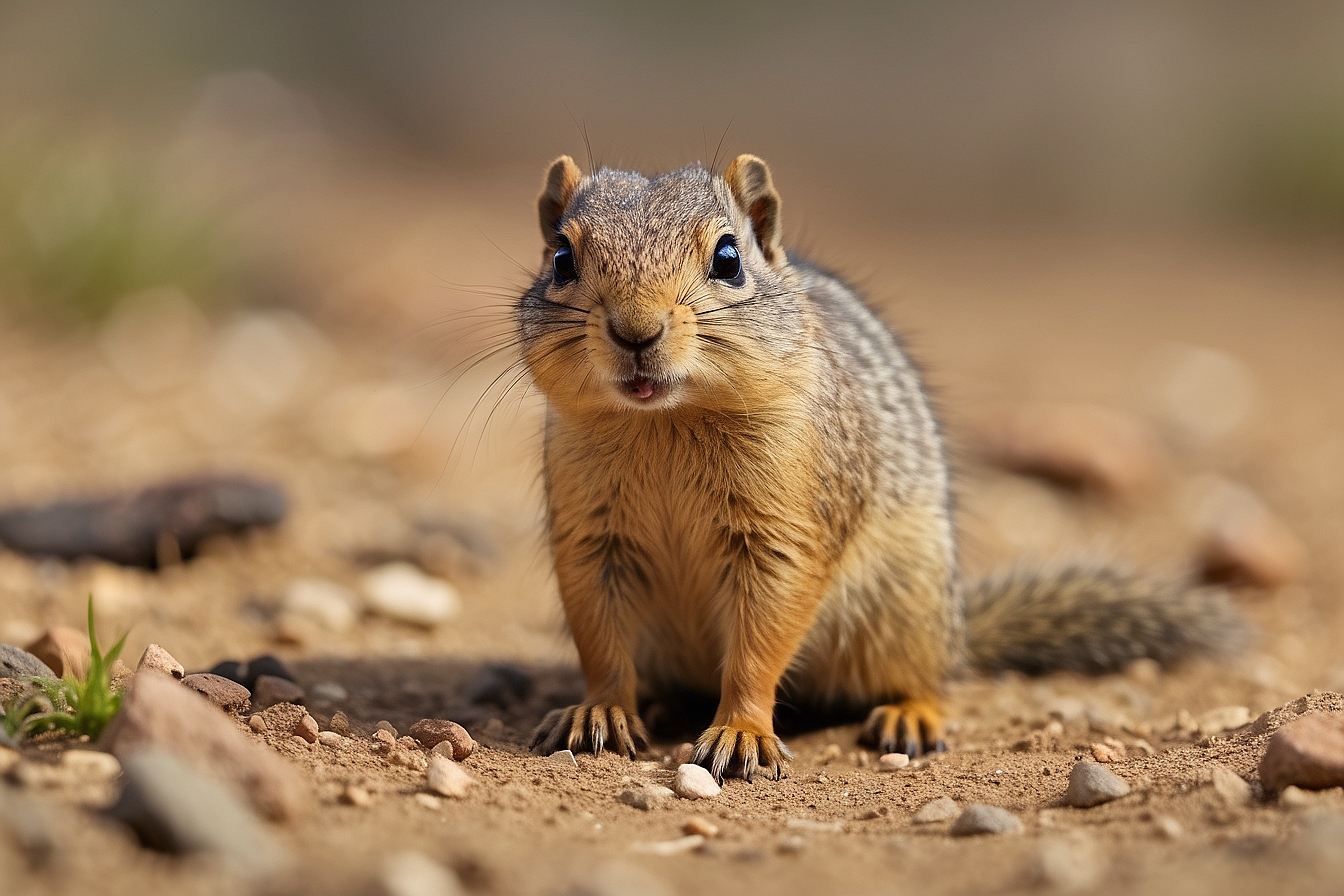
Raccoons
Raccoons belong to the mammal family. They can be found in multiple places around the world. They have front paws, facial ‘masks’, and striped tails. They live in empty buildings and garages. They feed on fruits, seeds, nuts, birds’ eggs and plants.
In Winter, raccoons don’t actually hibernate, instead, they grow thick coats to keep them warm and sleep for extended periods. They store fats in their bodies in the fall to provide them with the required energy in winter.

Facts About Winter Birds:
There are many different species of birds all over the world. They also differ in size, shape and colour. Some of the common features of birds are that they are warm-blooded, lay eggs, have feathers, and have wings. Here are some facts about birds in winter:
- Birds usually migrate to warmer places in winter.
- They migrate in flocks. A flock is a large group of birds.
- Some species of birds grow more feathers to feel warm in winter. This technique is called ‘more down’
- Some birds become less active in winter to save energy. This technique is called ‘slow down.’
- Some birds prefer to gather at night to keep each other warm. This technique is called ‘gather around.’
- Birds need fresh water in winter. Although some birds can eat snow and change it to water, they still need a lot of energy to do that.
- Some birds store food, like nuts and seeds for winter. Sometimes they feed on bugs and insects that can be found around.
- Some Birds keep eating during nice weather to avoid coming out of their nests in winter.
- Some other species of birds shiver in order to bring on the heat.
- Some birds direct the blood in their bodies to the most important organs like the heart and lungs.
- Some birds can lower their body temperature to match the surrounding environment.
- Some birds don’t fully hibernate, but they go into a deep sleep at night.
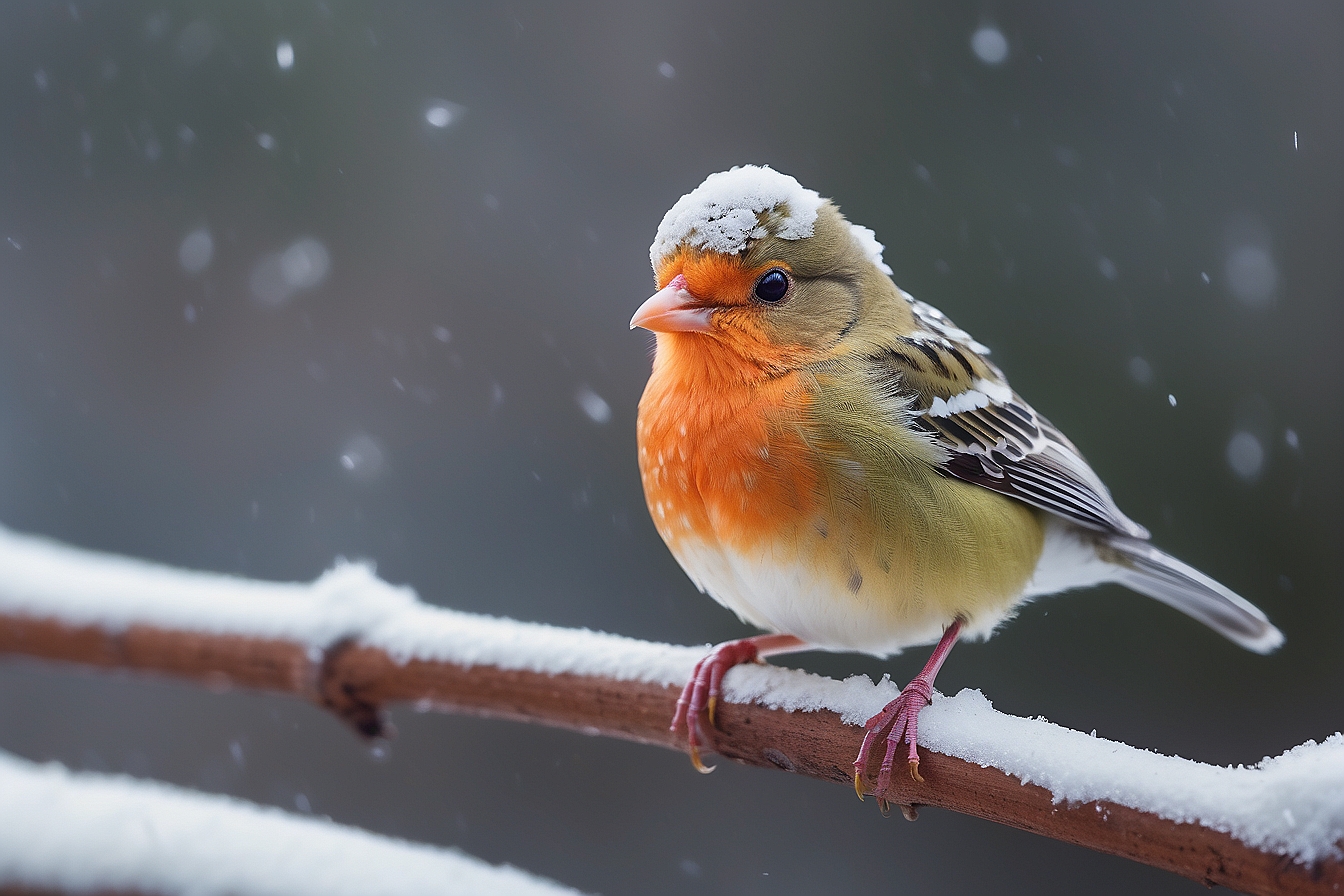
Facts About Winter Plants:
- The Chinese plum blossom blooms in cold weather. It is considered the national flower of the Republic of China.
- Deciduous trees lose their leaves in winter to save much-needed water.
- Trees can incredibly sense changes in weather.
- Trees also stop the cells from freezing by moving water from inside the cell to tiny spaces outside of the cells.
- Trees lose their leaves where water evaporates from plants.
- Conifers reduce the loss of water from their surface through their leaves that resemble needles with thick, waxy coatings.
- Valves and other evergreen trees close the freezing cells tightly in order not to affect the nearby cells.
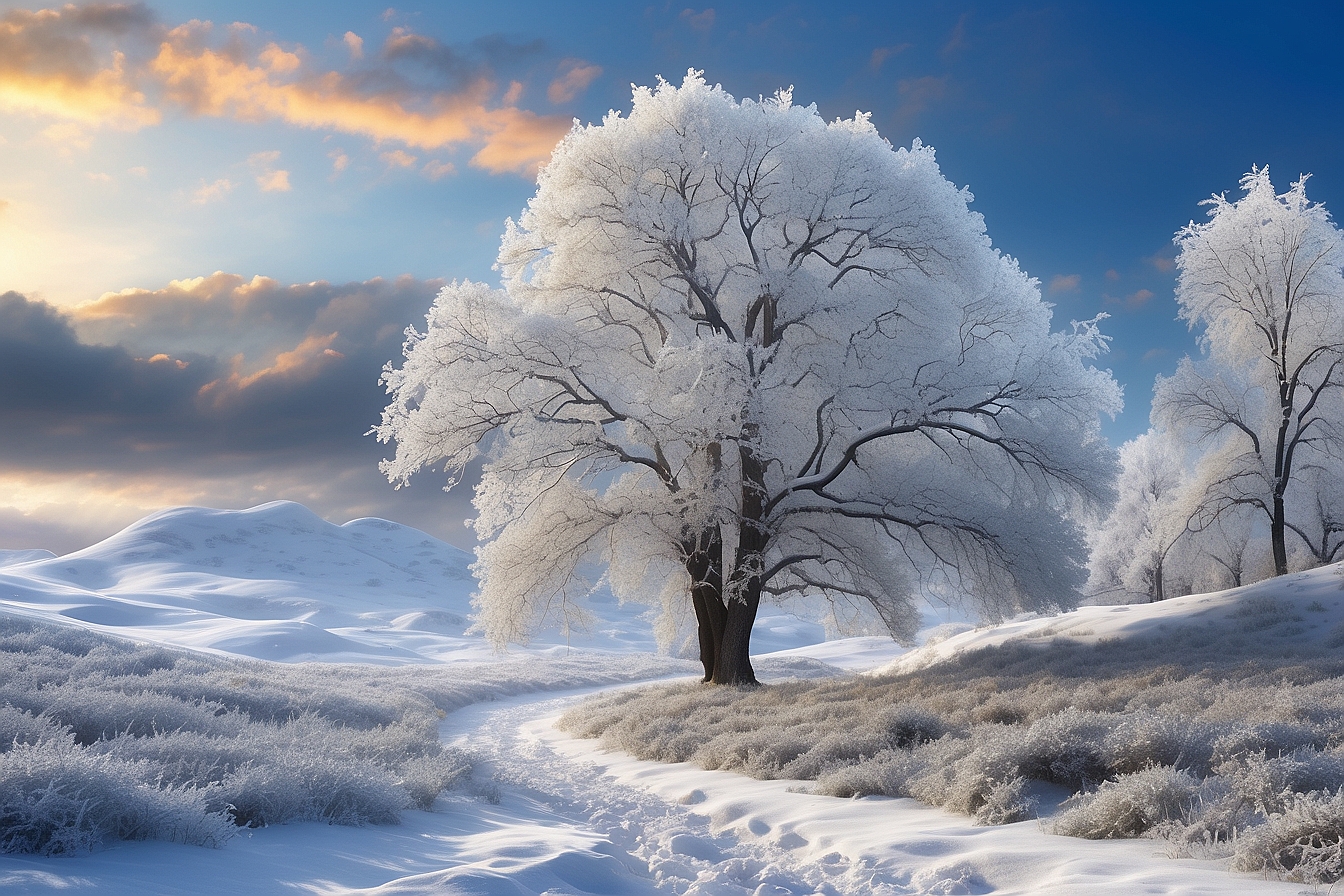
Interesting Facts about Winter Olympics
France hosted the first Winter Olympics in 1924. They are held in winter. They contain sports that are played on ice, like skating and ice hockey. The first international sports event to be held in winter was called Nordic Games. Here’s a list of sports in the Winter Olympics:
- Alpine skiing
- Biathlon
- Bobs eigh
- Cross country
- Curling
- Figure skating
- Freestyle skiing
- Ice Hockey
- Luge
- Nordic combine
- Short track
- Skeleton
- Ski jumping
- Snowboard
- Speed skating
Let’s mention some interesting Winter Olympics facts:
- Winter Olympics are held every 4 years, the same as Summer Olympics.
- Around 250 athletes participated in the first Winter Olympics from 16 countries.
- Cross-country skiing, ski jumping, and ice hockey were among the other 16 events held at the festival.
- Women were only allowed to compete in figure skating in the first Winter Olympics. Later in 1948, skiing became one of the sports available for women in the Winter Olympics.
- The Americas, Europe, and Asia are the only continents that hosted the Winter Olympics.
- Beijing will host the Winter Olympics in 2020.
- First-placed athletes win gold medals. Second-place athletes win silver medals. Third place winners win bronze medals.
- Norway collected the biggest number of medals in the Winter Olympics in South Korea in 2018.
Facts About Winter: What are the Winter Sports?
Winter sports refer to any sport that can be practised in winter mainly on ice or snow. Nowadays, winter sports have large popularity among people, especially in the countries that have the appropriate weather. Some resorts tend to offer winter sports to attract people’s attention.
Let’s talk about some of these sports!
Ice Skating
Ice skating is a kind of sport practised in winter on snow or ice. People who practice ice skating have to wear special shoes called ice skates. Ice skates developed through time from a skate made from a shank or rib of bones of some animals like oxen and reindeer to today’s skate that is made from narrow pieces of metal on the bottom of the shoes.
There are two forms of ice skating: figure skating and speed skating. Figure skating is concerned with the performance of different jumps, spins, and dance movements. Speed skating is mainly concerned with racing on ice skates.
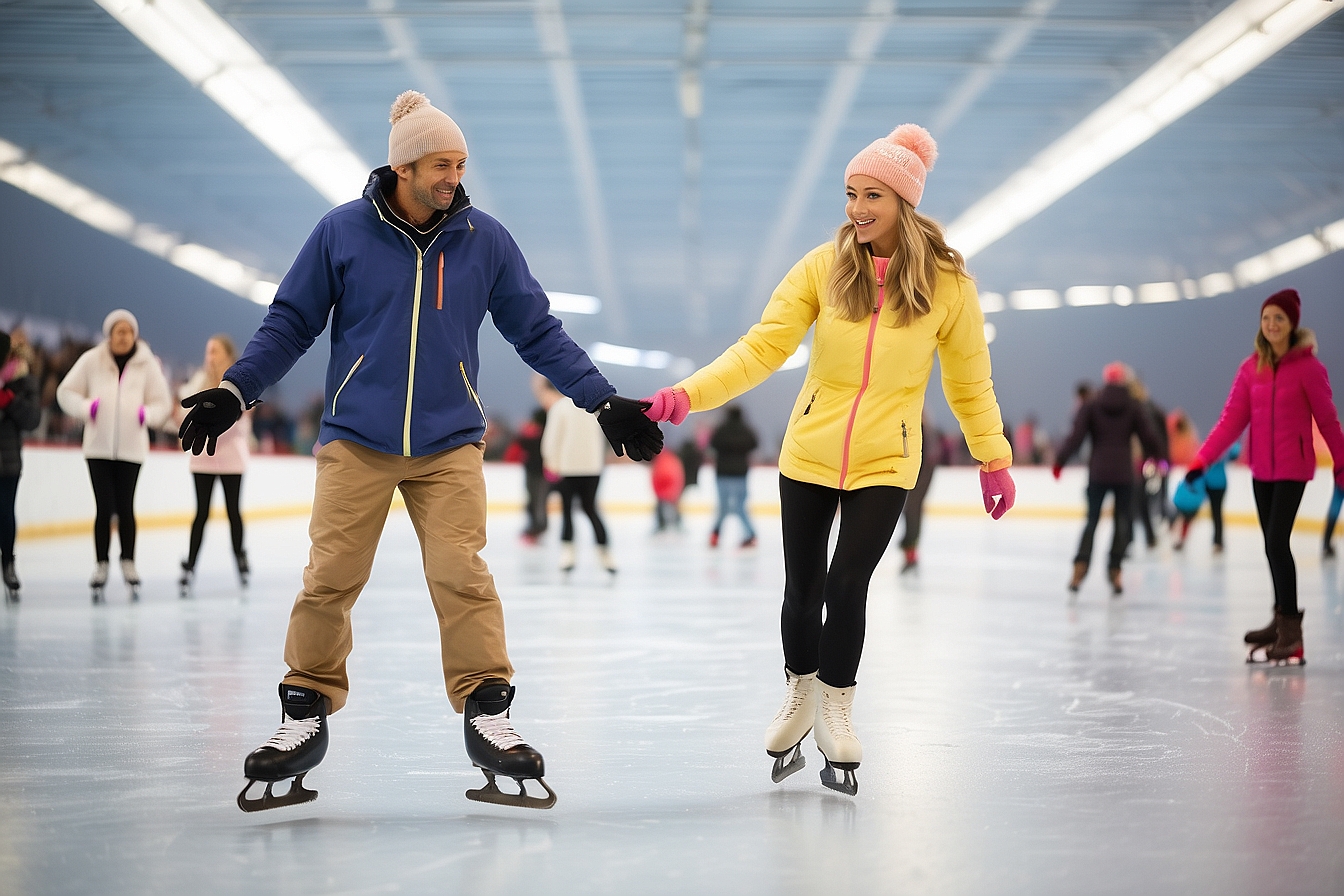
Skiing
Skiing was first discovered in Russia between 8000 and 7000 bc. People who practice skiing use skis to glide on snow weather as a means of transportation or a kind of winter sport. Skis are a pair of narrow strips of wood, metal, or plastic and are used with special boots connected to them with a binding.
There are two types of skiing: downhill skiing and cross country skiing. Downhill skiing is the most popular type. Skiers ski down a run on the side of a mountain or hill. Runs are marked with signs to represent the difficulty of the run. Green refers to the easiest run, blue refers to a more difficult run, and finally black represents the most difficult run.
Snowboarding
Snowboarding is somehow similar to skiing. The rider stands on a snowboard attached to his/her feet and descends a mountain covered with snow. Riders have to wear protective clothes against the cold weather, like ski goggles and helmets.
There are different styles of snowboarding. Freeride, freestyle, and free carve/race are the most popular styles of snowboarding nowadays. Each style has its technique and tools. There are also two possible positions to stand on the board, the regular one and the ‘goofy one’. The rider has to put his left foot at the back in the goofy position.
Sledding Sport
Sledging is also called sledge or sleigh. It is a type of vehicle that slides over ice or snow. Some sledges move on smooth and narrow runners. Some have iron or wooden bottoms. Others are drawn by reindeer or dogs.
There are different types of sledges, Tobogganing, Bobsledding, Luging, Skeleton Sledding, and Dogsled Racing. Some designs are used for different purposes, like transporting passengers or goods. Sledges are also used as fun activities.
Bobsledding
The first Bobsledding competition was held in Switzerland in 1898. It is one of the sports available in the Winter Olympic Games. It is a team sport consisting of 2 or 4 teams. Riders use ice tracks with sledges.
Modern Bobsleigh tracks are made of concrete and coated with ice. The tracks are a minimum of 1500 meters long and must have a maximum of 15 curves. Heavier sleighs are faster. Women were allowed to participate in bobsleigh in 2002.
Ice Hockey
It is a team sport that is played on ice. It is considered one of the winter sports. The players wear ice skates on their feet and hold hockey sticks to shoot around the ice. They skate at a very high speed. Each team consists of more than 20 players, but only 5 players play at once.
Ice hockey is popular in the United States, Canada, Russia, Sweden, and Finland. Players usually have skates and sticks. They wear protective pieces of cloth like a helmet, shoulder pads, elbow pads, mouth guards, protective gloves, heavily padded pants, and leg guards.
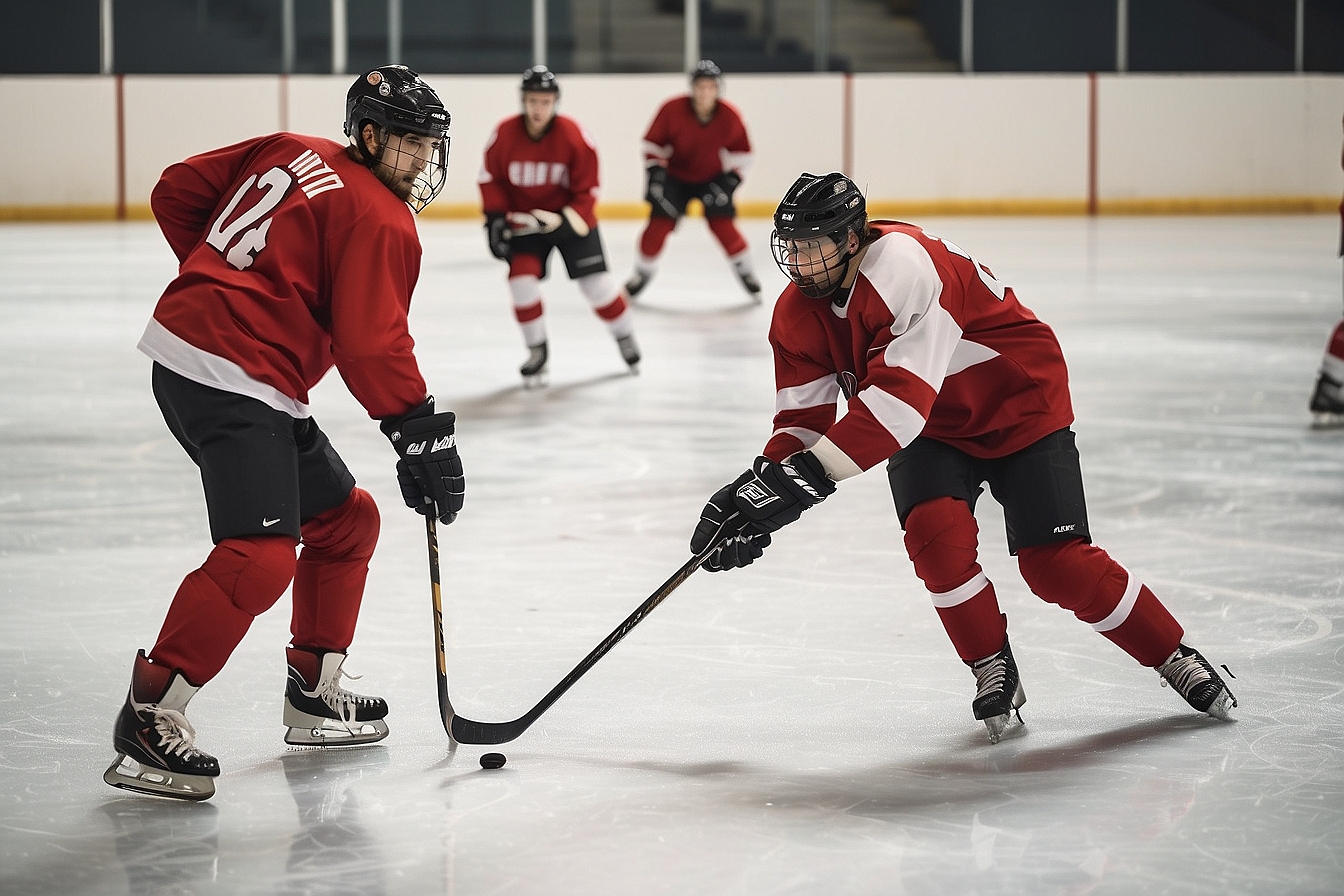
Bandy
Bandy is a winter sport. It is a team sport played on ice. Players use a ball, unlike in ice hockey where they use a puck. The team consists of 11 players. The game is divided into 2 halves, each half is 45 minutes.
The Federation of International Bandy sets the rules for the game. Bandy World Championship for men started in 1957. The Federation of International Bandy includes 32 countries.
Curling
Curling is one of the winter sports. It consists of 2 teams. Each team has 4 players. They play on an ice field. They slide curling stones on the ice towards the house which is the target. Each team slides 8 stones and the winning team is the one with the stones close to the centre of the house.
The player can control the speed of the stone. Two other players of the team sweep the ice with brooms to make the stone stop at the right place. Curling stones are heavy because they are made of granite. The player controls the stone by the handle on the top of the stone.
Snowmobile
A snowmobile is also called a snow machine, motor sledge, or skimobile. It is a motorized vehicle that works on snow or ice to travel in winter or as a fun activity. People usually drive in an open area or on a track.
Snowmobile became a popular sport. It is now considered a fun outdoor winter activity. Old snowmobiles were designed to take 2 people while the recent ones have space for only one person.
Conclusion
Winter, which begins on the winter solstice, is the coldest season of the year. All living things, including plants, birds and animals, prepare for winter. Hibernating is one of the adaptation methods for animals and birds.
Humans enjoy the winter season by joining different fun activities, like skating and snowboarding. Winter Olympics became popular with all its winter sports and people compete from different countries all over the world. Although winter is chilly, there is still a lot of fun sliding on the snow and ice.
If the facts About Winter have been of interest maybe look at some of our other articles for similar articles.


Leave a Reply